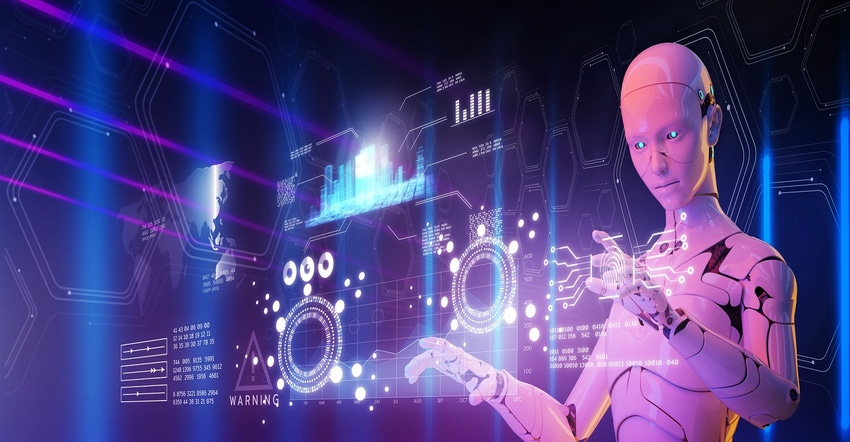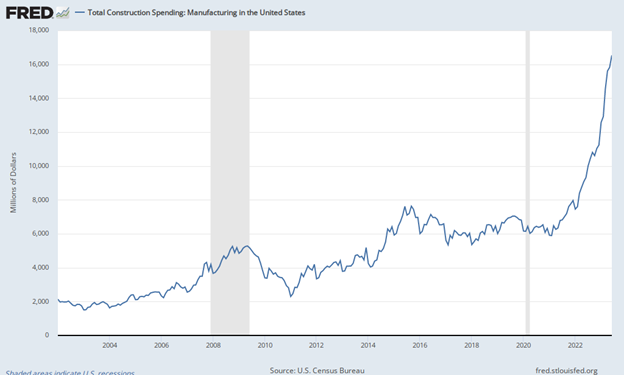Is AI Necessary to Onshore Manufacturing?
Manufacturers are moving to domestic production. The efficiencies of artificial intelligence may be key.
August 9, 2023

Signs are pointing to a manufacturing supercycle. Billions of dollars are being poured into building expensive manufacturing facilities to make solar cells, chips, semiconductors, batteries, and more. With this massive expansion, there will be increased pressure on manufacturers to meet this demand, including having access to highly skilled workers and raw materials – both of which are already in short supply.
Artificial intelligence puts manufacturers in a stronger position to ride this wave. Through the convergence of AI with simulation design software, design engineers can quickly run thousands of iterations and test different product scenarios before going to prototype. This results in multiple efficiencies – quicker time to market, lower cost, and reduced use of materials – overcoming many supercycle complexities. Sustainability is also a factor in the complexity of developing a domestic manufacturing base.
Constructiuion spending on manufacturing is skyrocketing:

We caught up with Ravi Kunju, chief product and strategy officer at Altair to get his views on how manufacturers can meet the challenges of increased manufacturing demand.
Design News: Can US manufacturers successfully move to onshoring and nearshoring to decrease reliance on the global supply chain? And can they do that in a sustainable manner?
Ravi Kunju: There are two aspects of this. The pandemic made us realize that basic things like tissue paper were not being manufactured locally. Unfriendly relationships with certain manufacturing areas are affecting the supply chain. Whether it's large or small manufacturers, they are re-evaluating their suppliers. This is happening all over the world, not just in the US. The idea is to become self-sufficient and not rely on countries that might become unfriendly.
There is great interest in the new chip act that arose from the lack of chips in the auto sector. Add to that the promise of green technology. This has become a big factor in steel. Manufacturers are moving to greener hydrogen. If they can reduce the greenhouse gasses in the manufacturing of steel, we will see a resurgence of local steel manufacturing. That is beginning to happen. That means there’s a likelihood that steel manufacturing will come back locally with a clean slate.
Initially, the shift to outsourcing was all about the cost of the product. Wallstreet was driving it. They wanted manufacturing at the lowest cost. Now, because of the increase in labor and shipping prices, people are starting to rethink outsourcing. Labor costs are increasing in the outsourced markets, and shipping costs are increasing. With China vs. Ohio and Michigan, we’re seeing that the local supply chain is better controlled, labor costs are evening out, and other things such as sustainability are coming into play.
DN: If the goal for manufacturers is quicker time to market, lower cost, and reduced materials, how do you get there?
Ravi Kunju: You get there with data. Take the cost of making a component. From one supplier to another, the pressure is the same. So, what makes the difference for the customer? It’s the speed at which they can get something out, plus the efficiency of the manufacturing process. That’s optimization. In aerospace lightweighting is critical. The focus of aerospace is reducing weight. People started with lightweighting, reducing the weight, improving the performance of the component, and using fewer materials. Optimization requires data analytics. When the temp varies it affects sheet metal. a lot of variations. There is a lot of data in the machines.
Today we’re able to use a lot of the data that was sitting unused. We can use it to analyze why things are stopping and how things change when a new shift comes in. Data is coming in from the plant. You can make sense of the data using AI and machine learning.
When the temp is higher, you may have to run the plant at a slower speed. Also, look at computing power. In the past, if you needed a computer, you had to procure it and install it. Today, you can set up 10,000 cores in less than 10 minutes in the cloud. You can install 1000s of cores in 10 minutes. Once you have this structure available and you only have to pay for your usage. Before you had a fixed infrastructure. Now there is no infrastructure. You have access to computational power at a fraction of the cost.
DN: Explain the need to balance ramping up new hires with efficient training and upskilling of current employees.
Ravi Kunju: To me, technology always deconstructs work. We don’t have typists anymore. You have to retool yourself like you retool a factory. This will always be the case. Engineers on the simulation side focus on making the components work per the instructions they are given. Now, you can design a prototype and put it into simulation. Learn to do it on the computer before you build a prototype. You can run the simulation and test in a few minutes. Do you have to build a physical model? Manufacturers need to take the time and learn the new AI stuff. They will be able to design everything more quickly. Webinars on AI are the hottest topic right now. We have to keep augmenting and retraining ourselves. Every day ChatGPT is giving you more answers. You need the capability to tell between the good stuff and the bad stuff, for that retraining is essential.
About the Author(s)
You May Also Like





